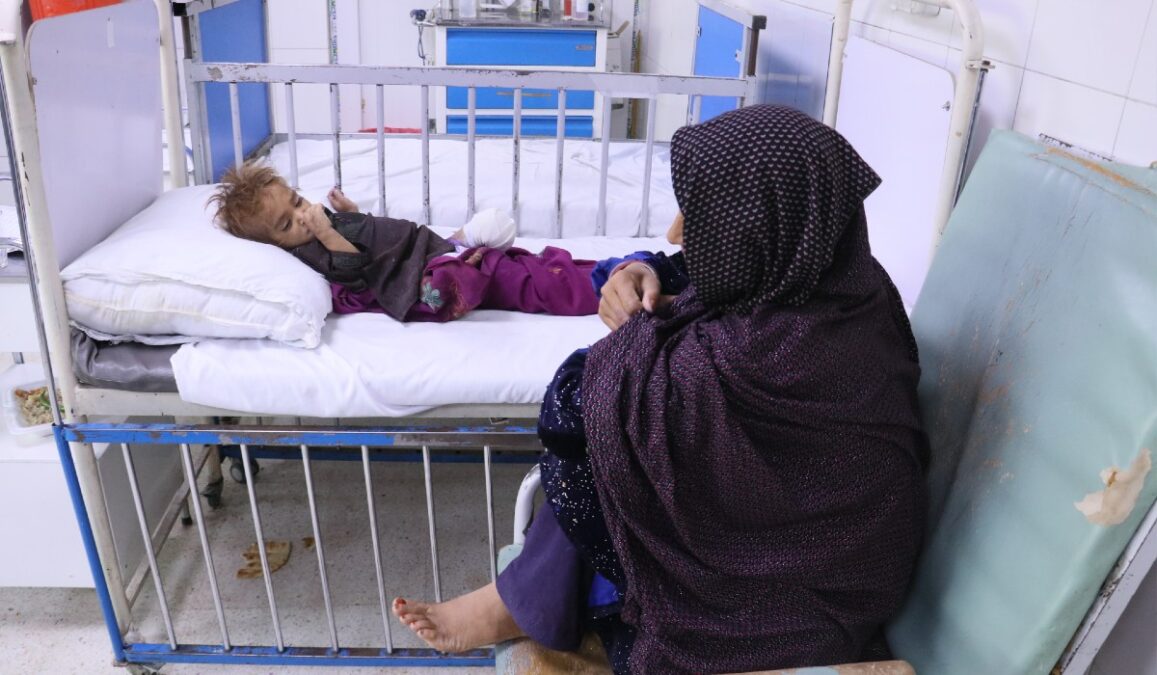KABUL — Approximately 6.5 million children in Afghanistan—nearly three out of ten—are expected to experience crisis or emergency levels of hunger this year due to the impacts of floods, prolonged drought, and the return of Afghan refugees from Pakistan and Iran, according to Save the Children.
New figures from the Integrated Food Security Phase Classification (IPC) forecast that 28 percent of the population, or about 12.4 million people, will face acute food insecurity by October. Among them, nearly 2.4 million are predicted to endure emergency levels of hunger, just one step below famine.
While these numbers show a slight improvement from the October 2023 report, they underscore the persistent need for aid, with poverty affecting half of Afghanistan’s population.
In May, torrential rains and flash floods in Northern Afghanistan claimed more than 400 lives, destroyed or damaged thousands of homes, and devastated farmland.
Save the Children said it has deployed a mobile clinic in Baghlan as part of its emergency response program.
An estimated 2.9 million children under the age of five are projected to suffer from acute malnutrition in 2024, Save the Children said.
“When my children are hungry, they become sad, and this affects me badly,” said Firoz’s mother, Mariam*. “We have some food, but it is not sufficient for everyone. We cannot afford it. There are days when we have a full meal, and on other days, we do not eat full meals.”
“These people face financial problems. From an agricultural standpoint, they have land but don’t have water or adequate resources for farming—they are jobless. These issues affect children. When children are affected, they may not be able to go to school or may have to work to find food for their homes. They become deprived of their rights or become ill and malnourished. All these problems are affecting children,” Nawid, a member of a Save the Children health team in Northern Afghanistan, said.
The slight improvement in the number of children expected to experience acute hunger is attributed to widespread humanitarian assistance and a projected better harvest, among other factors. However, food aid is expected to decline this year due to funding cuts.
Since September 2023, more than 557,000 Afghans have returned from Pakistan after the country announced that all undocumented foreigners must leave voluntarily or face deportation. Nearly half of the returnees are children. Hunger levels are predicted to rise in Jalalabad, a city where many returnees have settled, increasing competition for jobs.
Arshad Malik, Country Director for Save the Children in Afghanistan, said, “Save the Children has treated more than 7,000 children for severe or acute malnutrition so far this year. Those numbers reflect the massive need for ongoing support for families facing continuous shocks. Children are suffering the devastating impacts of three years of drought, high unemployment, and the return of more than 1.4 million Afghans from Pakistan and Iran. We need long-term, community-based solutions to help families rebuild their lives.
“The improvement in the number of people projected to experience acute hunger this year is encouraging, but without increased international support, there is a danger that this trend could reverse. Only 16 percent of funding for this year’s humanitarian response plan has been met so far, yet nearly half the population needs assistance. This is not the time for the world to look away.”




